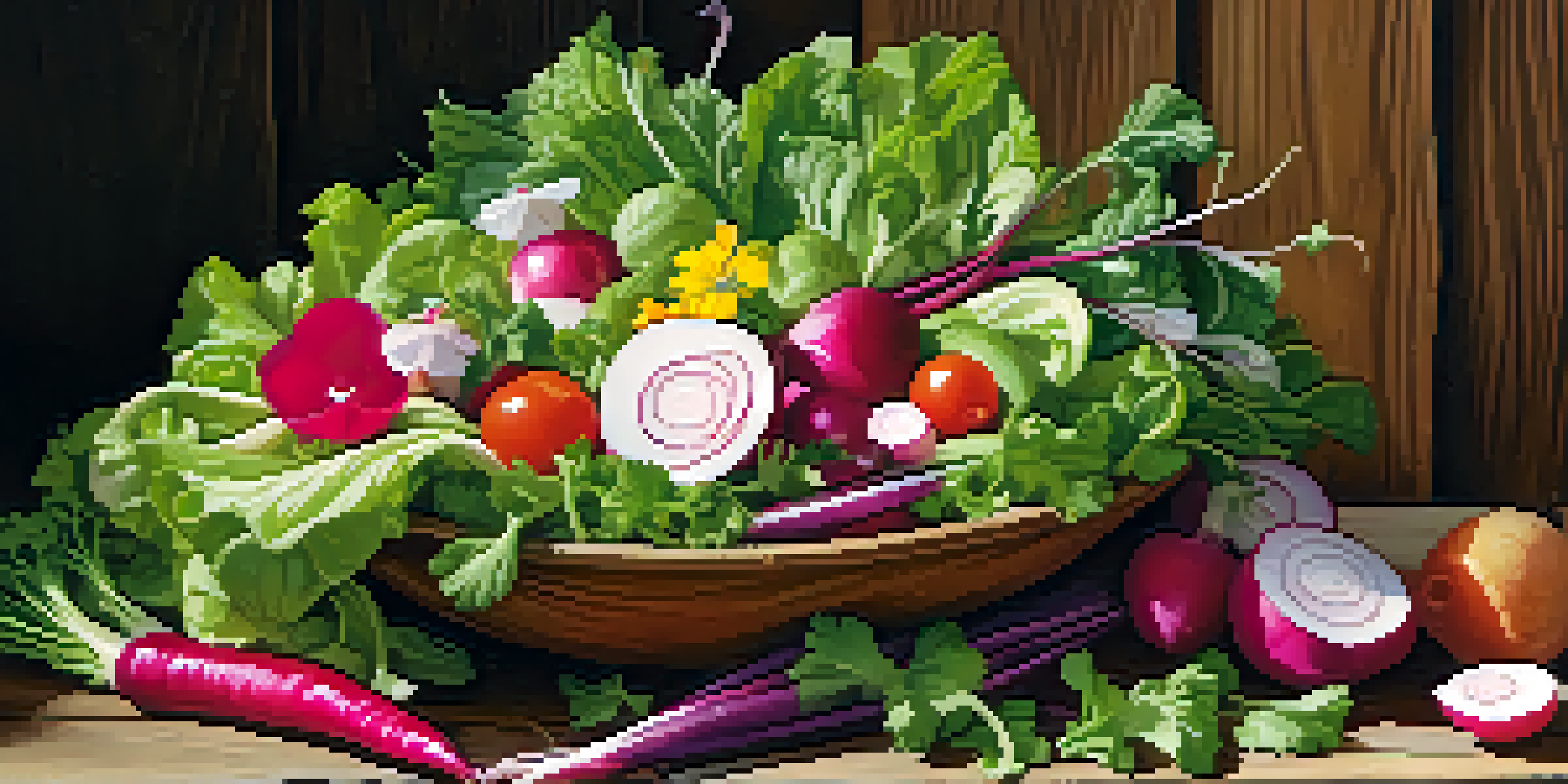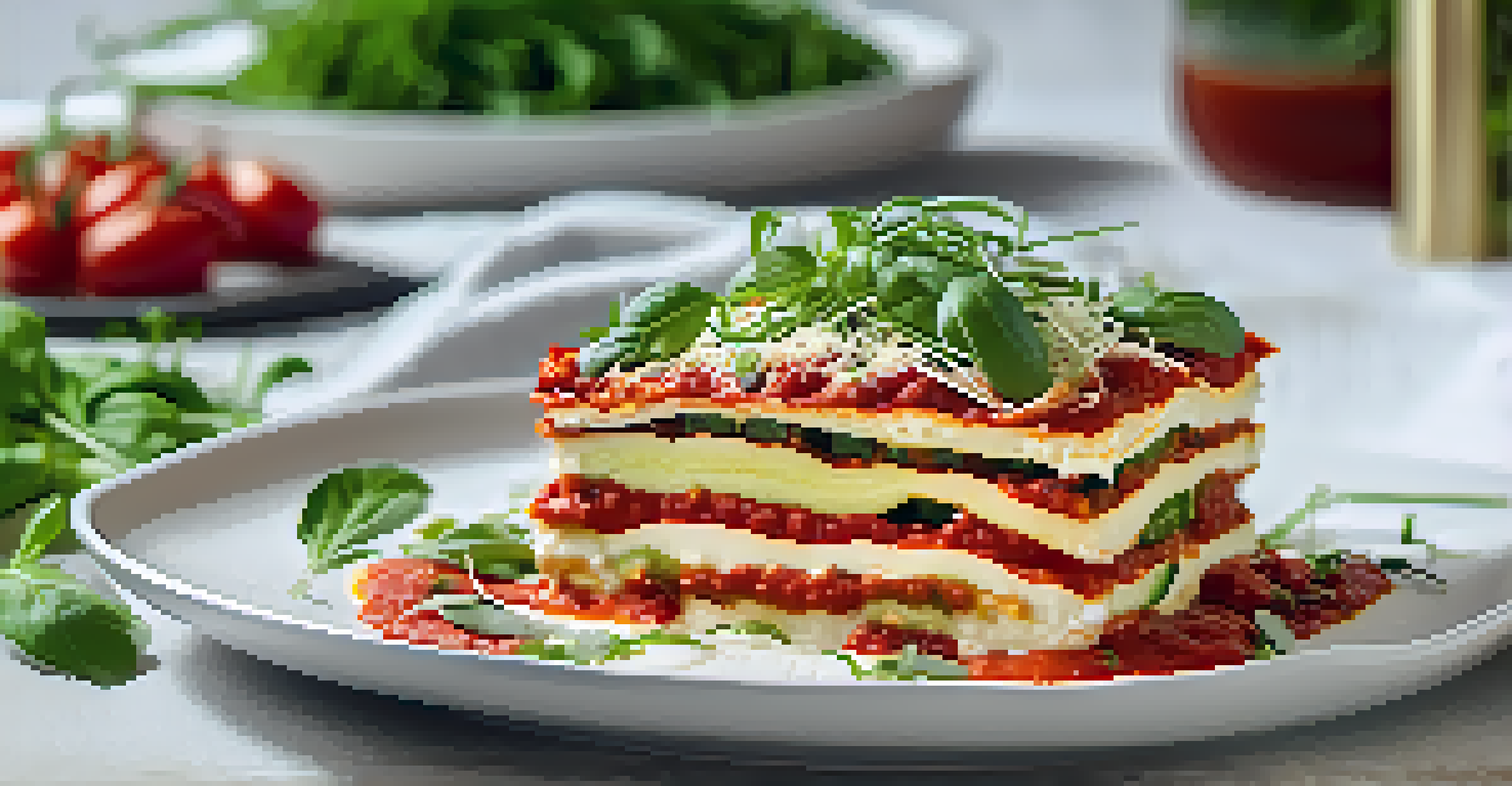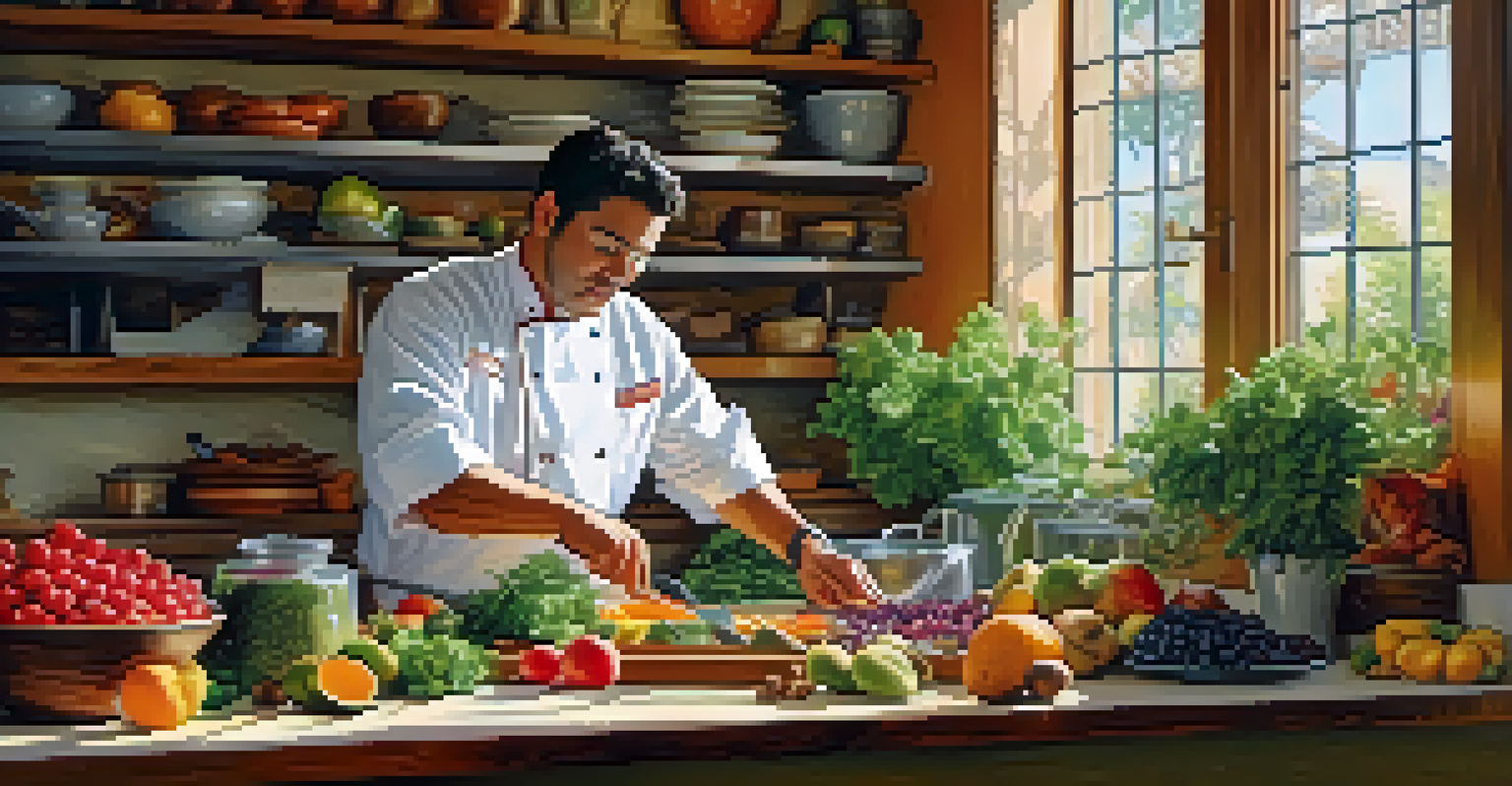Top 10 Raw Food Challenges That Chefs Are Taking on Today

The Quest for Freshness in Raw Ingredients
One of the biggest challenges chefs face in raw food preparation is sourcing fresh, high-quality ingredients. Unlike cooked dishes, raw food relies heavily on the integrity of its components, which means that any compromise in quality can significantly affect the final dish. Chefs often need to build relationships with local farms and suppliers to ensure they have access to the freshest produce available.
Fresh ingredients are the foundation of any great dish, especially in raw cuisine where every flavor counts.
Additionally, the seasonal nature of many raw ingredients can create hurdles in menu planning. For instance, a chef might have a fantastic summer salad in mind, but if the necessary ingredients are out of season, they need to pivot quickly. This unpredictability can be both thrilling and daunting, requiring chefs to be adaptable and innovative.
Ultimately, the quest for freshness is not just about taste; it also influences the nutritional value of the dishes. Chefs must be knowledgeable about the best times to harvest certain foods to maintain their health benefits, adding another layer to the complexities of raw food preparation.
Balancing Taste and Texture in Raw Dishes
Raw food often presents a unique challenge in balancing taste and texture. Unlike cooked meals, which can achieve depth and richness through various cooking methods, raw dishes rely on the natural flavors of ingredients. Chefs must be creative in combining textures, such as crunchy nuts with creamy avocados, to keep the dining experience exciting.

For instance, a chef might blend a variety of nuts and seeds to create a creamy sauce that mimics the mouthfeel of dairy products. This not only enhances the flavor profile but also adds a layer of sophistication to the dish. Experimenting with different combinations can lead to unexpected, delightful results that surprise diners.
Fresh Ingredients are Essential
Sourcing high-quality, seasonal raw ingredients is crucial for creating flavorful and nutritious dishes.
Moreover, understanding how to incorporate spices and herbs becomes crucial in raw food preparation. Chefs need to explore the full spectrum of flavors available to them, ensuring every bite is a harmonious blend, ultimately elevating the overall dining experience.
Nutritional Challenges of Raw Food Diets
While raw food diets are often lauded for their health benefits, they also come with nutritional challenges that chefs must navigate. Certain nutrients, such as protein and vitamin B12, may be harder to obtain without animal products and can require careful planning. Chefs need to be knowledgeable about nutritional profiles to design well-rounded meals.
The beauty of raw food is in its simplicity and the connection to nature it fosters.
For example, incorporating ingredients like nuts, seeds, and legumes can help provide essential proteins and fats, but chefs must ensure these components are prepared correctly to maximize their nutritional benefits. Soaking and sprouting can enhance digestibility, but these techniques add another layer to the preparation process.
Ultimately, educating diners about the nutritional aspects of raw food is key. Chefs often take on the role of advocates, sharing insights into how different ingredients contribute to a balanced diet, which can help diners appreciate the artistry behind raw food preparation.
Innovative Presentation Techniques in Raw Cuisine
Presentation is vital in raw cuisine, where the visual appeal can significantly enhance the dining experience. Chefs are constantly challenged to think outside the box, using vibrant colors and creative plating techniques to showcase the natural beauty of raw ingredients. A well-presented dish can entice diners even before they take their first bite.
For example, using edible flowers, microgreens, and different cutting techniques can transform a simple salad into a work of art. Chefs often experiment with layering, height, and arrangement to create visually stunning plates that are almost too beautiful to eat. This artistic approach not only elevates the meal but also reflects the chef's personality and creativity.
Balancing Flavor and Texture
Chefs must creatively combine ingredients to achieve an exciting balance of taste and texture in raw dishes.
Moreover, presentation can also play a role in conveying the story behind the dish. By thoughtfully arranging ingredients, chefs can highlight the journey from farm to table, fostering a deeper connection between diners and their food.
Adapting Classic Recipes to Raw Versions
Transforming classic cooked dishes into raw versions is a popular challenge for many chefs. This creative endeavor requires a deep understanding of the original flavors and textures while finding raw alternatives. Chefs often experiment with various techniques, such as dehydrating or fermenting, to recreate the essence of beloved comfort foods.
For example, a traditional lasagna might be reimagined with layers of thinly sliced zucchini, cashew cheese, and a raw marinara sauce. This not only retains the flavor profile of the original dish but also offers a refreshing twist that appeals to health-conscious diners. This adaptability showcases the versatility of raw ingredients and the chef's ingenuity.
However, this process can be time-consuming and requires a great deal of trial and error. Chefs must balance authenticity with creativity, ensuring that the raw version respects the spirit of the original dish while offering something new and exciting.
Educating Diners on Raw Food Practices
With raw cuisine gaining popularity, chefs face the challenge of educating their diners about raw food practices. Many people may not understand the principles behind raw diets, including the health benefits and food safety considerations. Chefs often take on the role of educators, sharing insights through menu descriptions, workshops, or even social media.
For instance, providing information about soaking nuts or the benefits of sprouted grains can help diners appreciate the efforts that go into raw food preparation. By demystifying the process, chefs can foster a greater understanding and appreciation among their patrons.
Educating Diners on Raw Cuisine
Chefs play a vital role in educating diners about the health benefits and practices of raw food preparation.
Furthermore, engaging with diners through storytelling can create a more immersive experience. Whether it's discussing the sourcing of ingredients or the inspiration behind a dish, these conversations can enhance the connection between the chef and the diner, making the meal even more memorable.
Navigating Food Safety in Raw Food Preparation
Food safety is a crucial aspect of raw food preparation, and chefs must be diligent in their practices to ensure the health of their diners. Since raw dishes often include perishable ingredients, proper handling and storage are essential to prevent contamination. Chefs must be well-versed in food safety protocols to mitigate risks.
For example, understanding the importance of washing produce thoroughly and maintaining appropriate temperatures can help avoid foodborne illnesses. Chefs often implement strict procedures in their kitchens, ensuring that all team members are trained in food safety practices to create a safe dining environment.

Moreover, transparency in food safety can be a selling point for raw food establishments. By openly communicating their practices, chefs can build trust with diners, assuring them that their health and safety are top priorities.